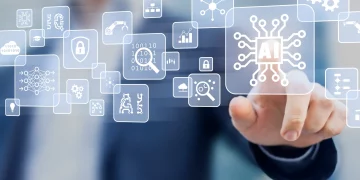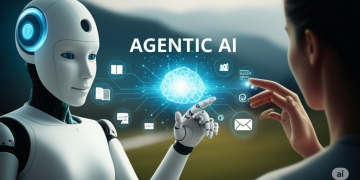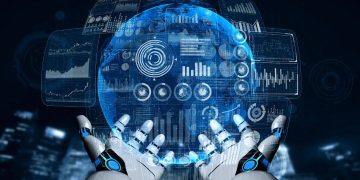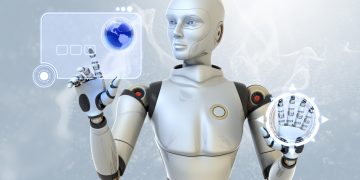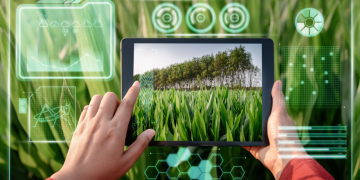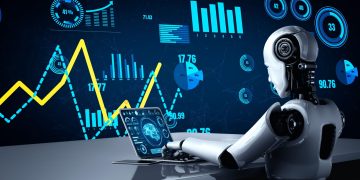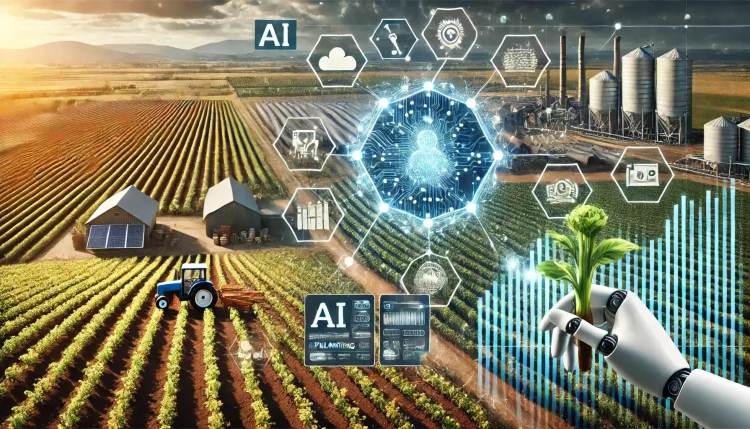In an era of rising global food demand, environmental stress, and resource scarcity, agriculture is under pressure to become more efficient, sustainable, and responsive. Traditional methods are proving insufficient in the face of these challenges, but artificial intelligence (AI) is emerging as a powerful enabler of change. From detecting crop diseases early to optimizing irrigation and automating harvests, AI is reshaping agriculture through precision farming and intelligent decision-making systems.
This article explores how AI is being applied in agriculture, the tangible benefits it brings to farmers and food systems, and the pioneering companies that are leading this technological revolution.
AI in Precision Agriculture: A New Farming Paradigm
Precision agriculture refers to farming practices that use advanced technology to monitor and manage variations in crops, soil, and weather conditions across specific plots of land. Rather than treating an entire field uniformly, precision agriculture tailors interventions—such as irrigation, fertilization, or pest control—based on detailed data from sensors, satellites, drones, and weather models.
AI plays a central role in enabling precision agriculture. Machine learning algorithms can analyze vast volumes of data to detect patterns, forecast outcomes, and automate decisions, empowering farmers to use resources more efficiently and increase yield with less environmental impact.
Key Applications of AI in Agriculture
1. Predictive Crop Planning and Yield Forecasting
AI-powered models analyze a combination of historical crop data, local weather forecasts, soil health records, and regional pest trends to determine the best time to plant and predict expected yields. This level of foresight helps farmers make strategic decisions about crop selection, resource allocation, and investment.
For instance, Bayer Crop Science’s Climate FieldView platform leverages AI to guide farmers in optimizing planting schedules, selecting seed varieties, and anticipating yield outcomes based on dynamic environmental data.
2. Early Detection of Pests and Diseases
Using AI and computer vision, drones or smartphones can scan crops for signs of disease or pest infestations, often before they become visible to the human eye. Algorithms trained on large image datasets recognize subtle changes in color, shape, and texture to identify potential threats.
The Plantix mobile app by PEAT, for example, allows farmers to take a photo of a sick plant and receive instant AI-generated diagnoses and treatment suggestions. It has proven especially valuable in regions where access to agricultural experts is limited.
3. Smart Irrigation and Water Management
Water scarcity is one of the most pressing issues in agriculture. AI enables the precise monitoring of soil moisture levels and weather data to determine exactly when and how much to irrigate. By integrating with IoT sensors in the field, AI systems can automatically trigger irrigation only when needed.
CropX, a company operating in the US and Israel, provides a platform that collects soil data through in-ground sensors and uses machine learning to generate customized irrigation schedules. Farmers using CropX have reported substantial water savings and improved crop performance.
4. Automated Weeding and Targeted Fertilization
AI is also used in advanced agricultural machinery to distinguish crops from weeds and apply herbicides only where necessary. This reduces chemical use and environmental harm while saving costs. Fertilizers can also be applied variably based on the nutrient profile of different zones within the same field.
Blue River Technology, now part of John Deere, developed the “See & Spray” system, which uses AI and robotics to detect and eliminate individual weeds with pinpoint accuracy during field operations. This has been a game-changer for row-crop farming in terms of input efficiency.
5. Harvest Optimization and Autonomous Operations
AI can determine the optimal time to harvest crops based on maturity data, weather forecasts, and market demand predictions. This helps avoid premature or delayed harvesting, ensuring better quality and shelf life.
Tevel Aerobotics has developed flying robots that use AI to autonomously pick ripe fruit from trees. These machines analyze the size, color, and position of fruit to make decisions in real time, helping farms cope with labor shortages and harvest more consistently.
6. Market Forecasting and Supply Chain Intelligence
Beyond the field, AI helps forecast market trends, manage inventory, and reduce food waste by predicting post-harvest behavior and consumer demand. AI tools integrate with logistics platforms to streamline the movement of agricultural products, reducing delays and spoilage.
IBM’s Watson Decision Platform for Agriculture aggregates satellite data, weather models, and market data to provide real-time insights across the agricultural value chain—from farm to shelf. This enables smarter planning and risk management for both smallholders and large agribusinesses.
Real-World Impact: What AI Delivers to Farmers and the Food Industry
The adoption of AI in agriculture is producing concrete benefits:
- Increased Crop Yields: By detecting issues early and optimizing inputs, AI helps maximize harvest output.
- Resource Efficiency: Farmers can reduce their use of water, fertilizers, and pesticides while maintaining or improving productivity.
- Environmental Sustainability: AI-powered precision farming lowers emissions and chemical runoff, protecting ecosystems.
- Labor Savings: Automation and remote monitoring reduce the need for manual labor and allow farm staff to focus on higher-value tasks.
- Risk Reduction: Predictive analytics provide early warnings for weather risks, pests, and market volatility, enabling better preparedness.
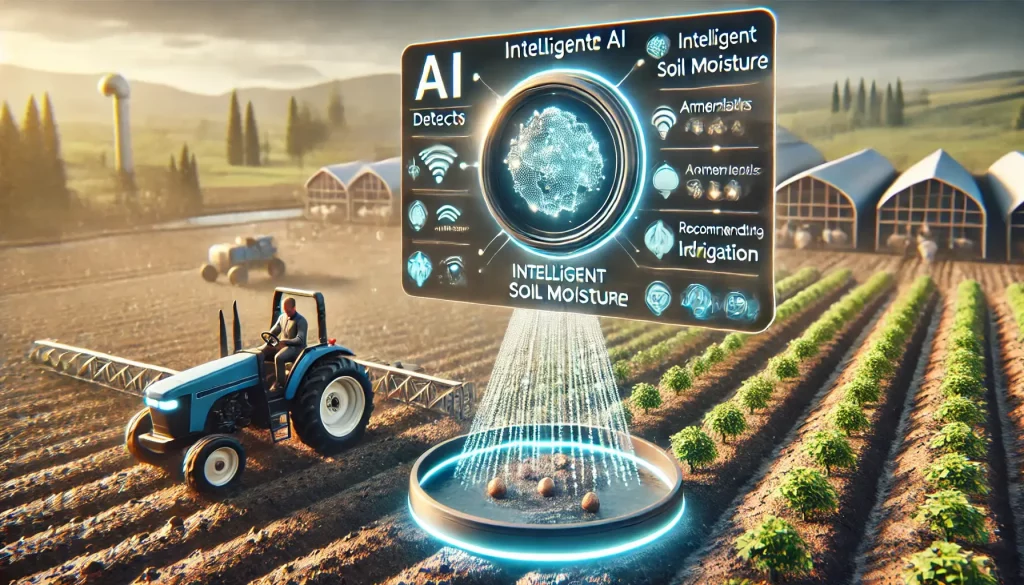
Leading Companies Driving AI in Agriculture
A number of innovative companies are leading the charge in applying AI to real-world agricultural problems:
- John Deere has invested heavily in autonomous machinery and smart sprayers that use AI for precision weed control.
- IBM offers full-stack AI platforms for agricultural planning, forecasting, and sustainability monitoring.
- Taranis uses high-resolution aerial imagery and AI to identify crop stress, disease, and nutrient deficiencies at the leaf level.
- CropX provides AI-powered soil intelligence tools that help farmers make data-driven decisions in irrigation and nutrient management.
- Tevel and Blue River Technology are using robotics and machine learning to automate complex, time-sensitive farm operations.
These companies illustrate how AI is not just a theoretical concept in agriculture—it is already driving efficiency, innovation, and resilience across global food systems.
Challenges and Barriers to Adoption
Despite its promise, AI in agriculture faces several challenges:
- Accessibility for Small Farmers: Many smallholders lack access to the devices, connectivity, or capital required to implement AI solutions.
- Data Infrastructure: Reliable, high-quality data is the foundation of effective AI, but rural areas often suffer from poor data collection infrastructure.
- Technical Skills: Farmers and agricultural workers may need training to use AI platforms effectively.
- Cultural Resistance: Some farmers may be hesitant to adopt unfamiliar technologies without seeing clear, localized evidence of benefit.
- Privacy and Ownership of Farm Data: Concerns about who owns the data collected on farms—and how it is used—are growing.
Overcoming these obstacles will require public-private partnerships, government support, and user-centric technology design that considers the needs and limitations of diverse farming communities.
Looking Ahead: The Future of AI in Agriculture
As AI technologies continue to advance, the future of agriculture will become increasingly autonomous, data-rich, and climate-smart. Future trends include:
- The integration of edge computing and offline AI tools for remote rural use
- AI-enabled seed genetics tailored for specific environments
- Real-time climate adaptation strategies using predictive AI
- Multilingual voice interfaces for AI apps serving farmers worldwide
AI will not replace farmers—it will empower them. By turning data into actionable intelligence, AI enables smarter decision-making, improves resilience to climate variability, and paves the way for sustainable food systems that can nourish the world’s growing population.
Conclusion
Artificial intelligence is transforming agriculture from intuition-based practice into a science of precision, predictability, and sustainability. With successful deployments in disease detection, irrigation management, automated harvesting, and supply chain optimization, AI is already proving its value on the ground.
Companies like John Deere, IBM, CropX, and Tevel are at the forefront of this transformation, offering real-world solutions that enhance productivity and protect the planet. As these technologies become more accessible and tailored to local needs, AI has the potential to not only feed more people but also do so in a way that preserves the earth for future generations.





